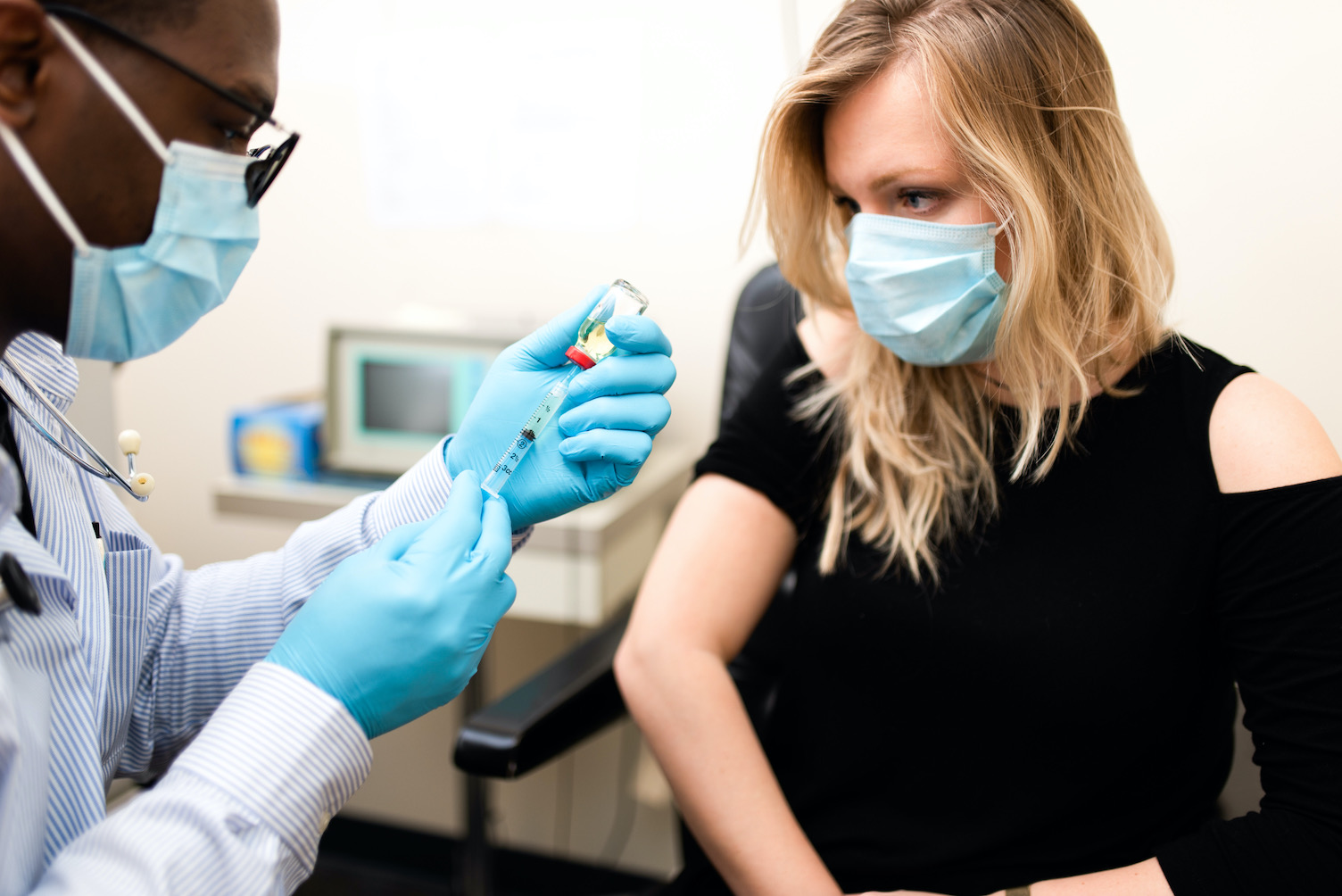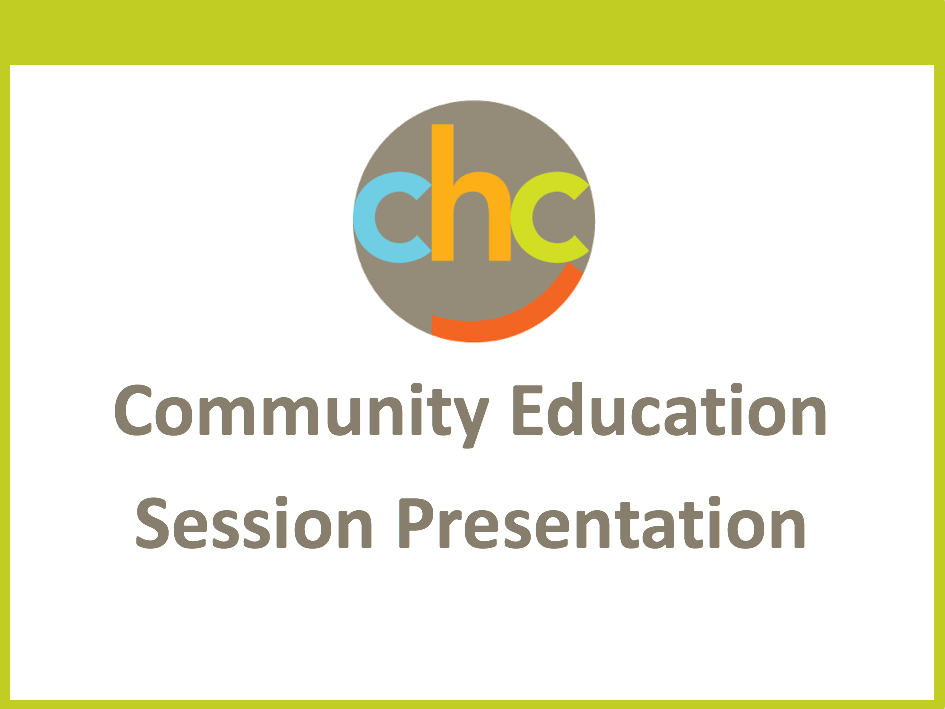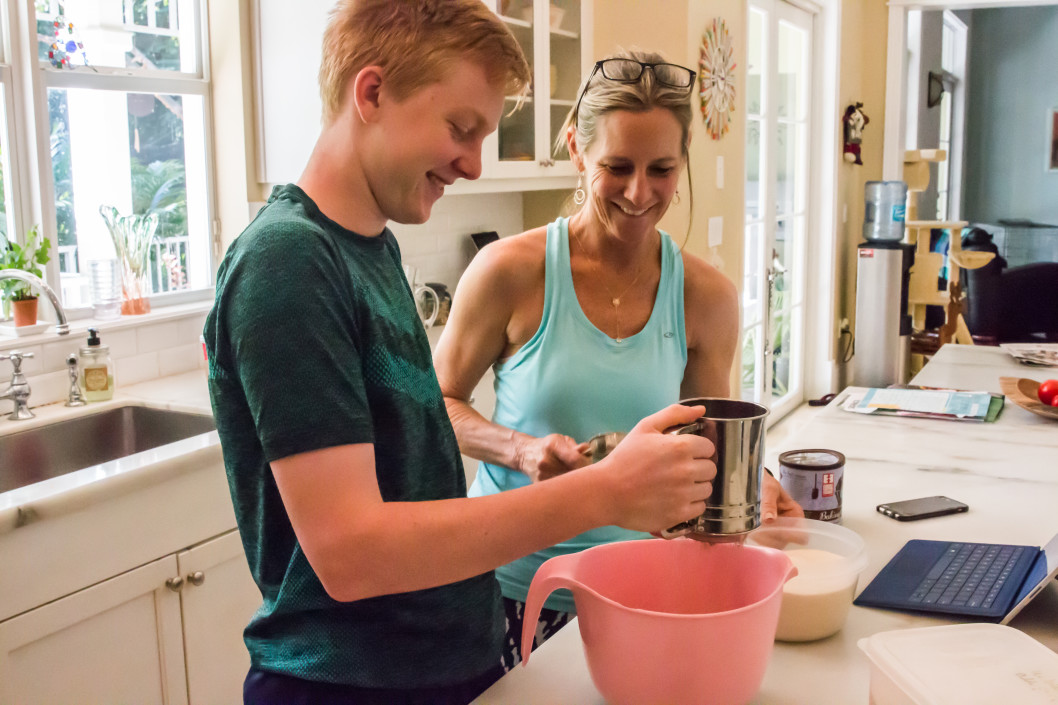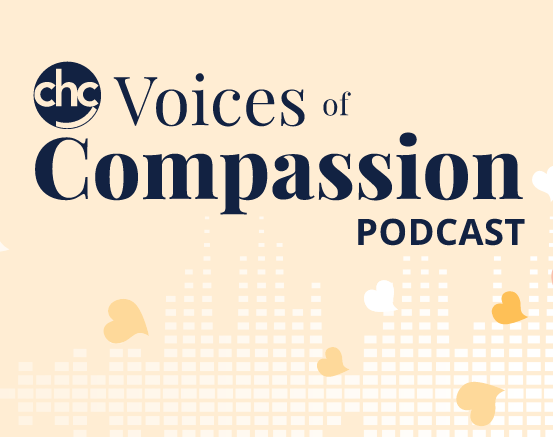Written by Dr. Glen Elliott, PhD, MD; Chief Psychiatrist & Medical Director at CHC
 COVID has left us sheltered-in-place, second-guessing every decision, cut off from friends and family, with plans completely out of our control for nearly a year. We’re exhausted, anxious, depressed, lonely and exasperated. Our kids slump over their screens while teachers bend over backwards to keep them educated and engaged. Our weekend calendars stare back at us, blankly. But now there is hope. As vaccines make their way into the world, we can start to imagine a life beyond our 6-foot radius.
COVID has left us sheltered-in-place, second-guessing every decision, cut off from friends and family, with plans completely out of our control for nearly a year. We’re exhausted, anxious, depressed, lonely and exasperated. Our kids slump over their screens while teachers bend over backwards to keep them educated and engaged. Our weekend calendars stare back at us, blankly. But now there is hope. As vaccines make their way into the world, we can start to imagine a life beyond our 6-foot radius.
The path towards life without masks is not straight, smooth, quick or carefree, however. Vaccine rollouts have been erratic and trying to book an appointment is harder than trying to score tickets to a sold-out show on Ticketmaster (pre-COVID, of course). Every country and state and county and city and site has its own set of rules. And once you finally book your spot, it hits you: what have I done? What am I about to inject into my body? Can I trust something that has only been approved for a matter of months? What about the long-term effects?
Rather than go down the Google search rabbit hole, Voices of Compassion podcast host Cindy Lopez sat down with CHC’s Chief Psychiatrist and Medical Director, Dr. Glen Elliott, and grilled him about all-things COVID and the vaccine. Here’s what she found out.
Your Questions, Answered
Q. How has COVID evolved?
COVID has been with us now for almost exactly a year. It started in China, and spread quite rapidly throughout the world but certainly into the United States. It’s what’s called the SARS virus and there’ve been several other variants—bird flu people may remember. COVID is the first one that really reached pandemic proportions, meaning that it’s prevalent throughout the world. The United States is number one in the world in terms of the number of infections and the number of deaths.
The nature of viruses is to change over time and variants turn out to be more viable, more infectious. There are two relatively new strains: one from England and one from Brazil, that at the very least turned out to be much more infectious than the original. Both of them have been found in the United States, the Brazil version which seems to be particularly infectious is newer and has not spread quite as widely. The English version is now pretty prevalent, particularly on the East coast, but is spreading.
Q. What does the vaccine mean for us?
Well ultimately the vaccine is the way to really accelerate the ability to get back to regular business. What we’ll need for any type of infectious disease is what’s called herd immunity; the idea of that is that there are enough people that are infected, that if somebody gets infected, it’s not going to start spreading widely. Dr. Fauci has said that somewhere between 70 and 85% of the population needs to be immune before we reach so-called herd immunity. And what the vaccines do is massively speed up that process.
If we wait for nature to take its course it will happen eventually but it literally could be years. For example, in California which was actually the most prevalent state for COVID, about 7% of the population has currently been infected. So that’s a long, long way from where we’d like to be. What vaccines do is to speed that process up markedly, particularly with the new Administration which is on track to meet its goal of one hundred million injections over the first hundred days. That’s a third of the population, it’s still not enough, but it’s a big step.
Q. So if I get the vaccine, what can I expect and is there any way I can get COVID from the vaccine?
It’s a great question, the answer to that with the two vaccines that are currently available, is absolutely not. I’m sure everybody at this point has seen pictures of the Coronavirus. It’s distinct because it has these cute little spikes all around it, and what the vaccine is doing is they’ve taken that spike and created a way to get cells to create antibodies against that specific spike, so there’s no active COVID in the vaccine itself. All they’re doing is helping the body get ready so that if COVID shows up it’s going to attack those spikes and that will prevent the COVID virus from getting into the cell.
Q. I’ve heard that the two vaccines that we’re currently using employ this new technology. So what does that really mean?
So it is new technology for creating vaccines, but it’s actually been actively and very vigorously studied for a variety of reasons by researchers for the last 10-12 years. And it’s a very exciting technology that has lots of implications for many diseases including cancer, reversing genetic defects, and other types of disorders that previously we’ve treated generically or not at all. What it involves is something called messenger RNA, which has been known about for decades. These are relatively small bits of amino acids that tell the cell what needs to be produced and they create a lipid layer around this so it gets it into the cell. In this case, the messenger RNA has this spike protein that attached to it and what it does is tell the cell: you need to create antibodies against this spike. It dies very, very quickly, there is no way it can get into the actual nucleus of the cell to affect DNA so you’re not going to have your genes changed, that simply is not a possibility. It’s really just a vehicle to allow this little spike that we believe all of the COVID viruses have to have to get into the cells.
Q. I keep hearing about herd immunity, is that real? What is it?
Herd immunity is very real, we’ve achieved it for a number of illnesses. The best example is smallpox which is actually better than herd immunity—we were able to literally wipe out smallpox across the world. What herd immunity typically means is that enough individuals in the community are immune to a particular virus or other kinds of infection so that if somebody gets it, it’s very unlikely to spread because it’s mostly going to be hitting people who are immune to it.
The measles vaccine is an interesting counter-example because of people’s hesitance to take it—there were these pockets of individuals who are not, in fact, immune. So if someone with measles comes into that population, you can end up with an outbreak of infection because there’s no herd immunity. Herd immunity doesn’t require a hundred percent of the population, but anything under 60% means that there are lots of people out there that can potentially cause problems.
Q. What do you think it’s going to take for us to get back to a new “normal?”
Unless we get a huge influx of additional vaccines, it may well be 6-9 months before we actually have any hope of reaching the level that we need for herd immunity. The other interesting thing, which just has not been settled yet, is that it’s unclear even if you are immune to COVID whether or not you might be a carrier. So for some pretty extensive period of time, we’re probably still going to need to do social distancing, probably still going to need to wear masks when we’re out in public. Obviously hand-washing we should’ve been doing anyway. All of those kinds of techniques are still going to be very much a part of our lives at least for the next nine months and more likely for another year.
Q. What advice or strategies can you share to help to alleviate the stress around the unknowns of the vaccine?
What we’ve found is that, in general, the COVID vaccine is either very, very well tolerated, or if it’s not tolerated there’s a very small percentage of people who have an immediate allergic reaction that’s typically the most serious within 10-15 minutes, which is why now they standardly ask people to stay for that period of time. The allergic reaction is completely reversible, there are medicines that can help with that; it’s hard to predict but definitely treatable with medical intervention. The actual individual reaction is enormously variable, which is true of vaccines in general.
People are worried that if they have a bad reaction the first time, it may be the worse the second, and I can say based on talking with colleagues who’ve had both vaccinations, that that is true sometimes, though it really varies. At worst what typically happens is you get a sore arm, you may start to feel sluggish and tired and just not your regular self for a day or two, you may run a slight fever, which you can treat with Tylenol. And then usually, I mean, for almost everybody, it then goes away. It’s a little early yet to say that there are no long-term side effects, but there has been no evidence of long-term side effects. And that’s really important and you have to balance that against the issue of what happens if you choose not to get the vaccine and you get COVID. Because increasingly we’re finding really very worrisome long-term effects of COVID itself.
For example, one of the things that’s been quite disturbing is that in general we have heard that COVID doesn’t seem to affect children very much, and largely that’s true. But there is a small group of kids with COVID who now are developing what’s called a chronic inflammatory disease, which usually occurs a couple of weeks after they’ve—often completely asymptomatically—gotten COVID. So they don’t even know that they had COVID, but then they end up in the hospital. So even kids are not completely safe. Thankfully they believe they have pretty reasonable treatments for chronic inflammatory disease for most kids.
The number of deaths that have occurred with COVID is very clearly age-related; it’s much, much more common in 75 and above or people who have some underlying condition to begin with, but even in late teenagers and young adults, there have been individuals who have had quite severe reactions.
So, you know, it’s the devil and the deep blue sea. You’re in a situation where you may be fine, but you maybe pass it along to somebody else who’s going to get a very serious illness, particularly if you’ve got old parents, or frankly, if you’ve got younger kids—either of those may actually end up being at risk versus taking the vaccine, continuing to take safe practices and hopefully getting to a point where it’s no longer present everywhere which is literally where we are now.
Q. So, Dr. Elliott, last question: if there was one thing that you would hope people would take away from this interview, what would that be?
A. The best course of action we have available right now as a population is for as many people as possible to get vaccinated.
Again if you want to wait until a more conventional vaccine comes out, that should happen fairly quickly, particularly for younger people I don’t think that that’s going to be a problem, especially since right now, one of the difficulties we have is that there aren’t enough vaccines for everybody who needs one. But don’t just reflexively say no. If you’ve got doubts, look into credible sources and weigh your options, but we desperately need to get as many people vaccinated as quickly as possible to allow us to get back to a “new normal.”
Recommended Resources
The CDC website is a treasure trove of information. These are scientists who are truly experienced in ways no other group is in the United States. So if you want a source of scientifically-based information that is absolutely up-to-date, going to the CDC website and looking up COVID is really probably the best single available source you can find.
Do you need someone to talk to? CHC can help. We invite you to call or email our Care Managers at 650.688.3625 or careteam@stage.chconline.org to set up a free 30-minute consultation. CHC teletherapy services are available now.






